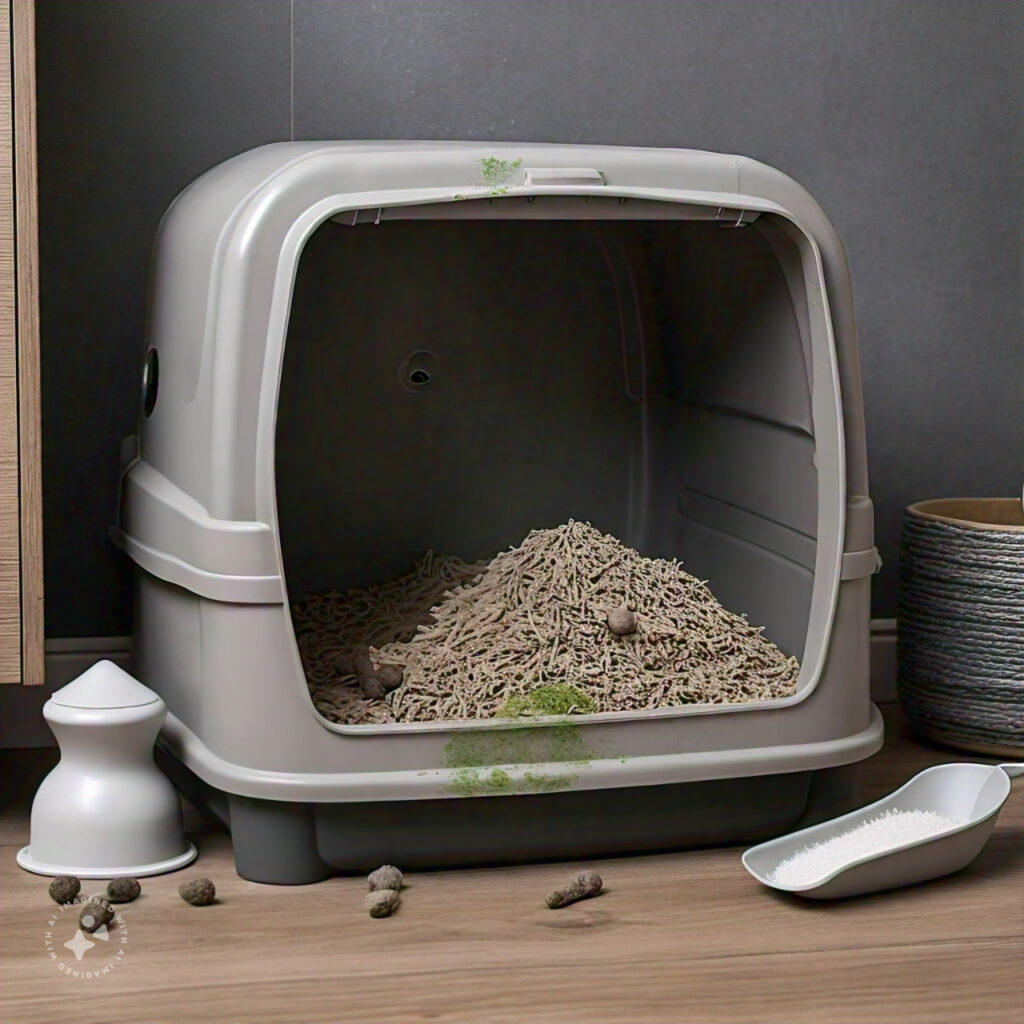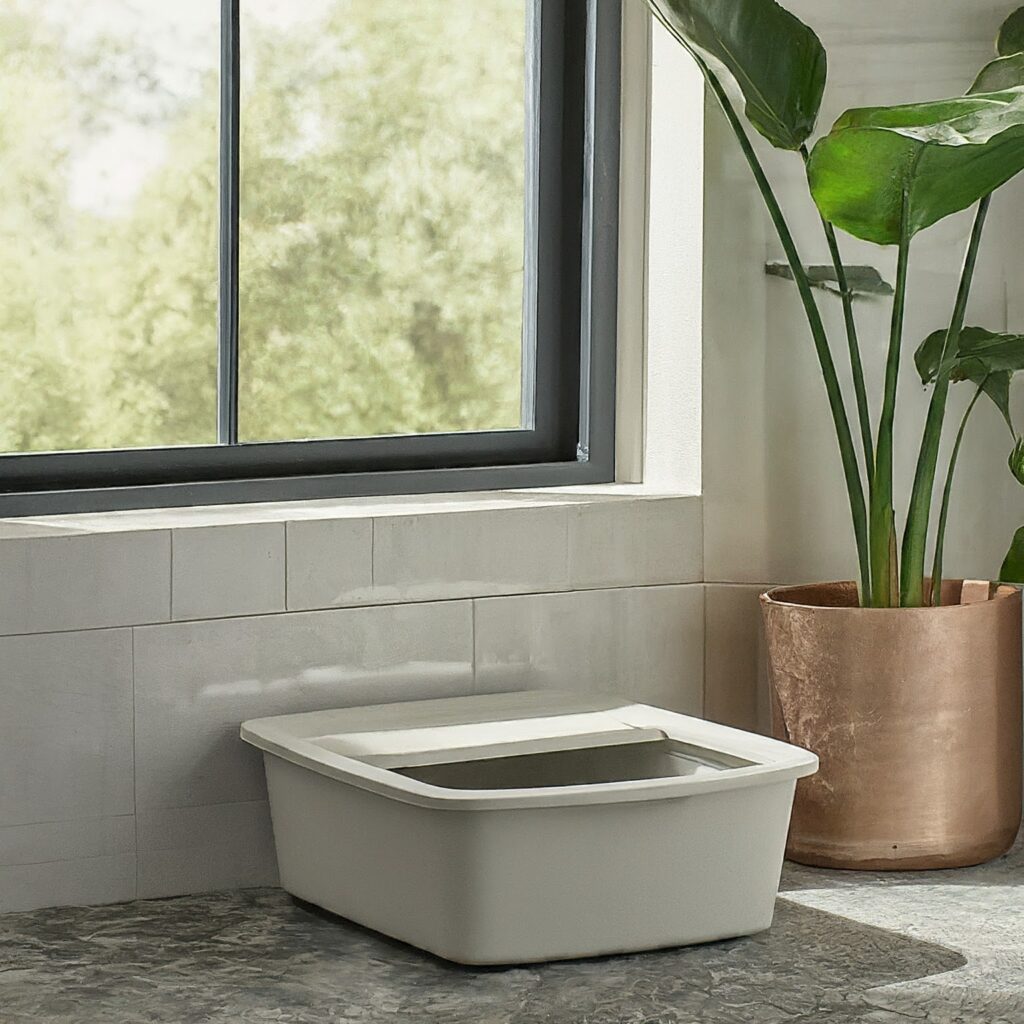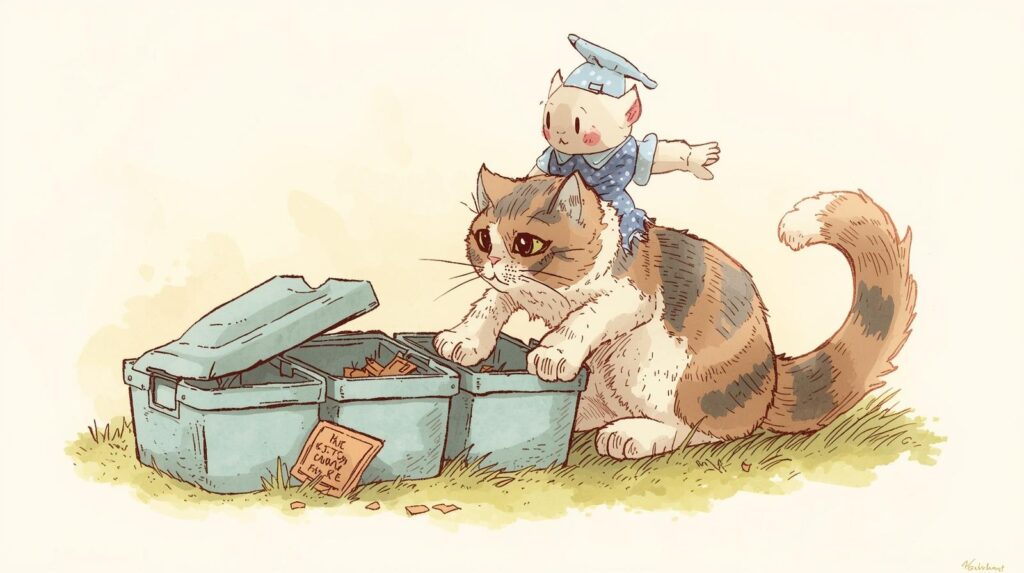A moldy litter box can be an unpleasant and potentially hazardous issue for both you and your cat. Mold thrives in damp, warm, and organic environments, which makes some types of cat litter susceptible to fungal growth. In this blog, we’ll explore why mold develops in litter boxes, how to prevent it, and steps to remove it safely.

What Causes Mold in Litter Boxes?
Mold in a litter box often results from a combination of moisture, organic material, and a warm environment. The following factors contribute to mold growth:
1. Moisture
Cat urine and humid conditions create a damp environment, which is ideal for mold to thrive.
2. Organic-Based Litters
Litters made from corn, wheat, or wood shavings can provide food for mold spores, making them more susceptible than clay or silica-based options.
3. Poor Ventilation
A poorly ventilated litter area traps heat and humidity, creating conditions favorable for mold growth.
4. Irregular Cleaning
When the litter box isn’t cleaned regularly, waste and moisture build up, increasing the risk of mold.
5. Warm Temperatures
Warm climates or heated rooms can accelerate mold growth.
How Mold Affects Cats and Humans
Mold in a litter box isn’t just a cosmetic problem—it can pose serious health risks.
For Cats
- Respiratory Issues: Cats may inhale mold spores, leading to respiratory irritation or infections.
- Skin Irritation: Direct contact with moldy litter can cause skin problems or allergic reactions.
- Toxicity: Some molds produce mycotoxins, which can be harmful if ingested or inhaled.
For Humans
- Allergies: Mold spores can trigger allergic reactions, such as sneezing, coughing, or skin irritation.
- Respiratory Concerns: Prolonged exposure to mold may lead to respiratory problems, especially in individuals with asthma or compromised immune systems.
Also Read: Cat Pee Turns Litter into Mud | Reasons & Solutions
How to Identify Mold in a Litter Box?
Mold growth isn’t always immediately visible, but there are common signs to look for:
- Discolored Litter: Green, black, or white patches indicate mold.
- Unusual Odors: A musty or sour smell may signal mold growth.
- Moist or Clumpy Litter: Persistent dampness or clumping outside of normal litter behavior.
Also Read: Cassava Cat Litter: A Sustainable Choice for Your Cat
How to Prevent Mold in a Litter Box?
Preventing mold involves creating a dry, clean, and well-ventilated environment. Follow these tips to keep your litter box mold-free:
1. Use Low-Moisture Litter
- Opt for silica or clay-based litters, which are less prone to moisture absorption and mold growth.
2. Scoop and Replace Regularly
- Scoop waste daily to reduce moisture and bacteria buildup.
- Replace the litter completely every week or as recommended for your litter type.
3. Clean the Litter Box Frequently
- Wash the litter box with hot, soapy water and disinfect it with a vinegar-water solution.
- Dry the box thoroughly before adding fresh litter.
4. Improve Ventilation
- Place the litter box in a well-ventilated area.
- Use a dehumidifier if the room is prone to high humidity.
5. Avoid Overfilling
- Use only the recommended amount of litter to prevent excess moisture from getting trapped.
6. Store Litter Properly
- Keep unused litter in a dry, sealed container to prevent exposure to moisture.
Also Read: Ran Out of Cat Litter? Here’s What You Can Use Instead
How to Remove Mold from a Litter Box?
If you discover mold in your cat’s litter box, it’s crucial to address it immediately. Follow these steps to clean and disinfect the box:
Step 1: Empty the Litter Box
- Dispose of the litter in a sealed trash bag.
- Avoid shaking or agitating the litter, as this can release mold spores into the air.
Step 2: Scrub the Box
- Use hot water and mild dish soap to scrub the entire box.
- Pay special attention to corners and crevices where mold may hide.
Step 3: Disinfect
- Mix equal parts white vinegar and water, or use a pet-safe disinfectant, to kill any remaining mold spores.
- Let the solution sit for 10-15 minutes before rinsing.
Step 4: Dry Thoroughly
- Use a towel to dry the box completely, or let it air-dry in direct sunlight to ensure no moisture remains.
Step 5: Refill with Fresh Litter
- Add fresh, dry litter and return the box to its original location.
Also Read: Fruit Flies in Cat Litter: Causes, Prevention, and Solutions
Can Mold Be Prevented with Certain Types of Litter?
Yes, the type of litter you use can significantly affect mold growth.
Best Litter Types for Mold Prevention:
- Silica Gel Litter: Absorbs moisture without creating a damp environment.
- Clay-Based Litter: Non-organic and less prone to mold growth.
Litters to Avoid:
- Corn or Wheat-Based Litters: Organic components can encourage mold growth.
- Recycled Paper Litter: While eco-friendly, it retains moisture and may be prone to mold in humid conditions.
Natural Remedies for Mold Control
If you prefer natural solutions, the following remedies can help prevent mold in your cat’s litter box:
- Baking Soda: Sprinkle a thin layer in the litter box to absorb moisture and neutralize odors.
- Activated Charcoal: Place a small bag near the litter box to reduce humidity and odors.
- White Vinegar: Clean the litter box with a vinegar-water solution to inhibit mold growth.
FAQs About Mold in Litter Boxes
Q: Is mold in the litter box harmful to my cat?
Yes, mold can cause respiratory issues, skin irritation, and other health problems for cats.
Q: How often should I clean my litter box to prevent mold?
You should scoop daily, wash the box weekly, and replace the litter regularly to minimize the risk of mold.
Q: Can I use bleach to clean a moldy litter box?
Bleach can kill mold but may leave harmful residues. Use it sparingly and rinse thoroughly, or opt for a pet-safe disinfectant.
Q: What’s the best litter for preventing mold?
Silica or clay-based litters are ideal, as they are less likely to retain moisture.
Q: Why does mold keep coming back in my litter box?
Persistent mold growth may be due to high humidity, improper cleaning, or the use of organic-based litter.
Conclusion
Mold in a litter box is an issue that can affect your cat’s health and your home’s cleanliness. By understanding the causes, taking preventative measures, and cleaning regularly, you can keep your litter box mold-free. Opt for mold-resistant litter and ensure proper ventilation to create a clean and safe environment for your furry friend.


